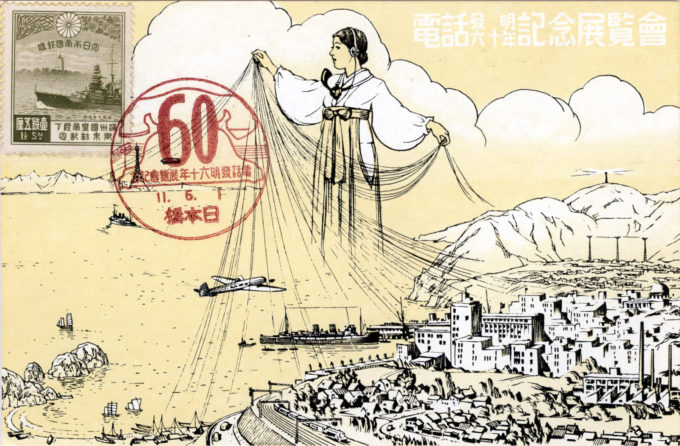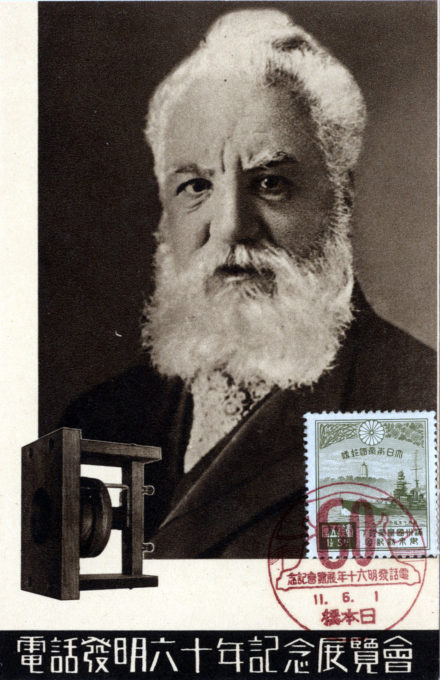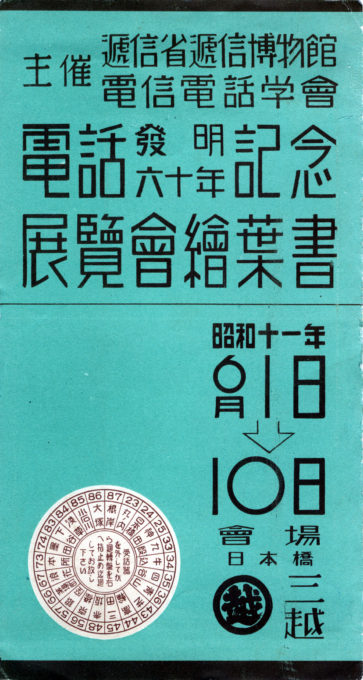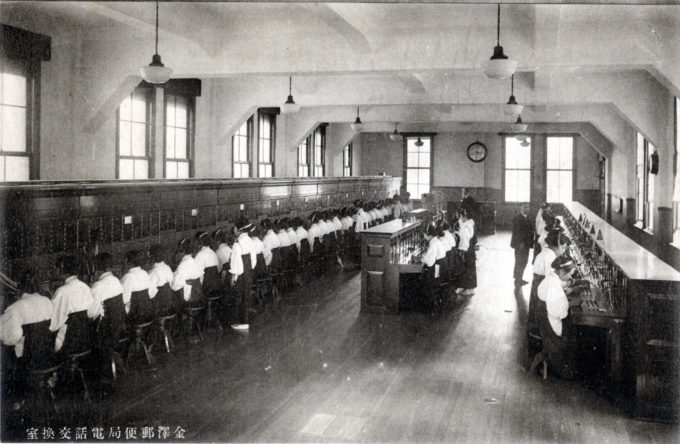
“Exhibition to Commemorate the 60th Anniversary of the Invention of the Telephone”, 1936. Telephone service was first introduced to Japan in 1877, when Alexander Graham Bell personally visited Japan a year after its invention to demonstrate his apparatus. The first telephones were found in governmental ministries and several Tokyo police stations. However, the service suffered from many complications and poor reception. In 1890, the government created a national corporation, and the improved system was extended to many post offices where private citizens were able to make calls. It was not until the late 1920s that telephones began to appear in middle-class homes.
See also:
50th Anniversary of the Telephone, 1926.
“Monument of [Hill] 203”, Port Arthur, Manchuria, c. 1910.
“Asia, as yet, with her eight-hundred-and-fifty-million people, has fewer telephones than Philadelphia, and three-fourths of them are in the tiny island of Japan. The Japanese were enthusiastic telephonists from the first. They had a busy exchange in Tokio in 1883. This has now grown to have twenty-five thousand users, and might have more, if it had not been stunted by the peculiar policy of the Government.
“The public officials who operate the system are able men. They charge a fair price and make ten per cent profit for the State. But they do not keep pace with the demand.
“It is one of the oddest vagaries of public ownership that there is now in Tokio a WAITING LIST of eight-thousand citizens, who are offering to pay for telephones and cannot get them. And when a Tokian dies, his franchise to a telephone, if he has one, is usually itemized in his will as a four-hundred-dollar property [$12,955 in 2023 dollars].”
– The History of the Telephone, by Herbert N. Casson, 1910
- Exhibition for the 60th Anniversary of the Invention of the Telephone, 1936. Inventor Alexander Graham Bell is pictured with the first telephone he successfully demonstrated on March 10, 1876 in Boston, MA (USA).
- Exhibition for the 60th Anniversary of the Invention of the Telephone, 1936.
“In the supreme emergency of war, the telephone is as indispensable, very nearly, as the cannon. This, at least, is the belief of the Japanese, who handled their armies by telephone when they drove back the Russians. Each body of Japanese troops moved forward like a silkworm, leaving behind it a glistening strand of red copper wire. At the decisive battle of Mukden, the silk-worm army, with a million legs, crept against the Russian hosts in a vast crescent, a hundred miles from end to end. By means of this glistening red wire, the various batteries and regiments were organized into fifteen divisions.
“Each group of three divisions was wired to a general, and the five generals were wired to the great Oyama himself, who sat ten miles back of the firing-line and sent his orders. Whenever a regiment lunged forward, one of the soldiers carried a telephone set. If they held their position, two other soldiers ran forward with a spool of wire. In this way and under fire of the Russian cannon, one hundred and fifty miles of wire were strung across the battlefield. As the Japanese said, it was this “flying telephone” that enabled Oyama to manipulate his forces as handily as though he were playing a game of chess.
“It was in this war, too, that the Mikado’s soldiers strung the costliest of all telephone lines, at ‘203 Metre Hill‘. When the wire had been boosted up this hill to the summit, the fortress of Port Arthur lay at their mercy. But the climb had cost them twenty-four thousand lives.”
– The History of the Telephone, by Herbert N. Casson, 1910




